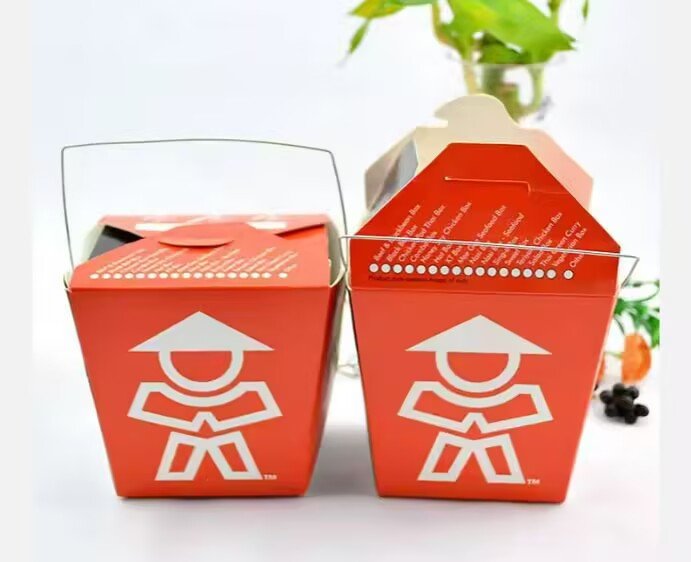3 Types of Disposable Paper Cups
Ganyuan
2024 年 9 月 20 日

Disposable paper cups are commonly used to serve drinks in specific scenarios. Depending on the design and material, paper cups can be differentiated into different types, each with a specific purpose. Below are the three main types of paper cups to divide into, and choosing the right one depends on the drink and the environmental impact you wish to minimize.
1.From the material definition
Polyethylene (PE) Coated Paper Cups
Polyethylene (PE) coated paper cups are widely used for serving hot and cold beverages. These cups are made of paper coated with a thin layer of polyethylene plastic to provide water and oil resistance, but they also raise environmental concerns. Polyethylene (PE) coating is not biodegradable and is harmful to the environment, but it is widely used because it is inexpensive.
PLA-Coated Paper Cups (Biodegradable)
These cups are made from compostable materials such as polylactic acid (a plant-based plastic), which is usually available in naturally decomposing corn starch, sugarcane starch, straw, etc., and is a biodegradable material; they’re perfect for environmentally-conscious users, and are often adopted by businesses looking to reduce their carbon footprint.
Water-Based Coated Paper Cups
Water-based coated paper cups are an innovative and environmentally friendly alternative to traditional polyethylene (PE) coated paper cups. Unlike PE coated paper cups, which use a thin layer of plastic, water-based coated paper cups are treated with a special water-based dispersion coating. This coating acts as a barrier to prevent liquids from penetrating the paper, making the cups leak-proof and durable. The main difference is that water-based coatings are plastic-free, making them more environmentally friendly and easier to recycle, and as consumers and businesses look for more sustainable solutions, these paper cups are gaining popularity for providing the same functionality with a reduced environmental impact.
2.From the external design definition
Single-Wall Paper Cups
Single-ply paper cups are made from a single layer of cardboard. Unlike double-layered paper cups, which have an extra layer of paper or insulation, the structural strength of single-layered paper cups relies solely on the thickness of the paper. They are usually coated with a thin layer of plastic or wax to prevent the paper from absorbing liquids and warping. Single-layer paper cups are typically used for cold drinks such as soda, water and juice, but are also great for certain hot drinks when insulated with a cup sleeve.
Double-Wall Paper Cups
The Double Layer Paper Cup consists of two layers of cardboard, with the extra outer layer creating an insulating air pocket between the walls of the cup, helping to keep drinks warmer for longer whilst protecting the consumer from the heat. Double-layer paper cups are specifically designed to provide better insulation and user comfort, especially when serving hot beverages. Double-layered paper cups are becoming increasingly popular in cafes, restaurants and takeaway service establishments that regularly serve beverages such as coffee, tea and hot chocolate.
Ripple-Wall Paper Cups
Featuring a unique corrugated or wavy outer layer that creates an insulating barrier between the hot beverage in the cup and the user’s hand, the Corrugated Wallpaper Cup is a popular alternative to single and double-walled paper cups. Designed for enhanced insulation and a unique textured grip, making these paper cups ideal for serving hot beverages such as coffee, tea and hot chocolate.
Paper cup with handle
Paper cups with handles are similar to standard paper cups but have a handle made of paper or a combination of paper and other materials. The handle provides additional support and insulation, making the cup easier to carry and drink from, especially when serving hot beverages. Paper cups with handles are a versatile solution for the beverage industry, offering the convenience of a disposable paper cup with the added comfort of a handle.
3.Defined by purpose
Suitable for cold drinks or brief use with hot drinks
Cold drink paper cups, i.e. disposable single-layer paper cups, require different grams of paper material for different uses to ensure that liquids can be held for long periods of time, and the inside of the cups are lightly coated to prevent moisture from soaking through. In order to ensure the durability of the paper cups, for some special beverages, such as espresso coffee or iced water, this can be accomplished by increasing the grams of the paper, and the interior and exterior are double-sidedly laminating the cups.
For hot drinks, double-layer paper cups and corrugated cups are usually used. The principle is very simple, by adding an intermediate layer to isolate the temperature propagation, which is the paper cups used in most of the beverage stores.
Ideal for hot beverages like coffee or tea
The proportion of hot drink cups used for coffee or tea is very large. Businesses will expand the brand awareness of hot drink cups by adding different patterns or beautiful packaging, of course, the cost will increase, but consumers do not realize that the more printed patterns are not the better, although it will look beautiful, but too much ink is easy to accidentally eat. I would like to emphasize that the businessmen should make the right amount of design according to the printing standard to ensure the safety of using paper cups.
Vending Paper Cups
Vending machine paper cups are an excellent choice for serving cold and hot beverages. These paper cups are specifically designed to provide convenience and ease of use in a variety of settings such as offices, cafes, vending machines, or during events, and the sizes are very tightly sized. However, these cups are better suited for short periods of time when drinking hot beverages such as coffee or tea. While vending machine paper cups can withstand the temperature of a hot beverage, they are not as insulated as specialized hot beverage cups. This makes them ideal for short-term drinking, as the drink is consumed quickly. For longer periods of time or for very hot drinks, thicker paper cups should be used.
In short, paper cups as a commercial scene is now indispensable disposable food packaging products, in addition to bring people a good experience, we should also note that the environmental protection of paper cups, can be explained can be composted products is the future development trend, but the choice of suitable for their own products is even more important to take into account the economic benefits and environmental protection indexes, which is a need for in-depth discussion of the issue.


